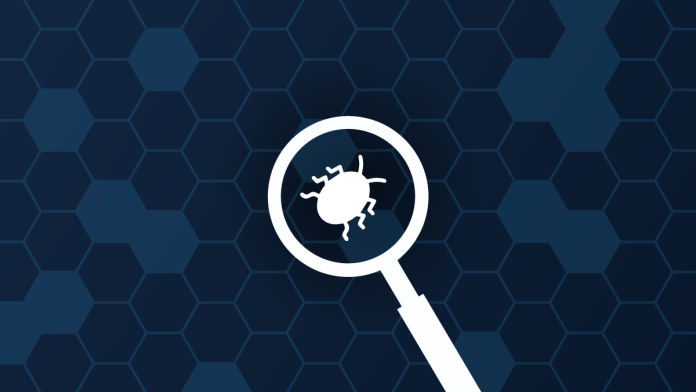
There are several highly-effective ways to secure your custom software development, deployment, delivery, and distribution pipeline. Many major software enterprises are still ill-prepared when it comes to system security. After all, defending software development environments can be incredibly technical, time-consuming, and tedious. The process has become even more complex in 2024 – with sophisticated hacking mechanisms, attack techniques, and data breach occurrences.
That’s why more programming teams are recruiting software quality assurance (SQA) experts to keep pipelines defended. As a developer yourself, you should understand the best software security practices, principles, and protocols. This way, you can help your team prevent unauthorized access, deter malicious hackers, and fend off data loss. Plus, you can establish a strong reputation and leverage the benefits of security automation. To get started now, read on to learn the different ways to secure your custom software development pipeline.
Conduct Peer Code Reviews
First and foremost, security-focused software development teams should conduct frequent, scheduled peer code reviews. Software code review sessions involve having one or more teammates look over your work. Have peer developers verify any updates, changes, revisions, or modifications made to your source codebase prior to release. Based on their analysis, they can then either accept or reject the changes made.
Of course, their decision should be based on your security standards, benchmarks, and principles. These regular reviews are an important precaution for ensuring quality control and reliable system performance. With these practices, you can optimize written code for better performance, ensure operational consistency, and cross-check project requirements. Plus, you can collaborate with software security experts to learn the latest defense techniques. Surely, conduct peer code reviews to defend your software development pipeline in 2024.
Adopt DevSecOps Principles

In addition, encourage your team to adopt DevSecOps principles. Before you can instill these security-focused protocols, you need to know What DevSecOps is. These principles focus on making security an integral phase for the custom software development life cycle. The DevSecOps build process follows repetitive stages of preparing code, triggering builds, and deploying software packages. Of course, introducing DevSecOps requires organizational, operational, and cultural changes. Most importantly, you need to invest in security resources, training programs, and supporting tools. If you do so, a DevSecOps culture will help reduce build expenses and increase software release rates. Plus, it supports transparency, privacy, and security-by-design. If any serious security incidents do occur, DevSecOps will help your teams recover faster. After all, it enables a fully-immutable infrastructure to defend your entire pipeline. Certainly, adopt DevSecOps principles to defend your software engineering pipeline in 2024.
Use Rollbacks When Necessary
If you fear that a specific software feature could contain a security vulnerability or weakness, don’t be afraid to use rollbacks. Essentially, these involve reverting your bespoke software back to a previous version. Oftentimes, these are the quickest way to restore your software so that you can focus on actually resolving the issue. With this approach, you can easily revert back to a secure, error-free, and stable product version. Ultimately, you should consider rollbacks whenever performance, quality, or security bugs are detected.
When performed quickly, this helps you mitigate a lot of the harm that could have otherwise occurred. That’s why many teams design for rapid rollbacks from the very beginning – even if they are never needed. If a rollback does occur, it is best practice to keep the reverted feature as a binary. Then, it can easily be re-deployed once all vulnerabilities, errors, weaknesses, and defects have been addressed. Indeed, consider integrating rollback protocols to adequately defend your custom software development pipeline.
Test For Vulnerabilities

Software security experts are always testing for potentially hazardous vulnerabilities. Teams need to run both static (SAST) and dynamic (DAST) application security testing. Static testing addresses serious security threats like injection vulnerabilities, faulty credentials, or weak cryptographic elements. Dynamic testing, on the other hand, conducts an end-to-end runtime inspection for bespoke software in an artificial, pre-production environment.
Of course, this can help identify other vulnerable, exploitable issues throughout your bespoke application. Plus, it gives you a better understanding of how your application will perform and behave under real-world conditions. With these approaches, you’ll be able to discover damaging security vulnerabilities before malicious hackers do. Of course, this will help you prepare for future upgrades and feature releases. Absolutely, testing for vulnerabilities is a great practice to secure your custom software design and development pipeline.
Monitor And Audit Pipelines
Furthermore, your team should constantly be monitoring and auditing your custom software development pipeline. The pipeline is a critical elements when it comes to your software’s underlying infrastructure and architecture. Vulnerabilities that exist here can seriously compromise software functionality, performance, functionality – or even your entire build environment. With frequent monitoring, you can ensure your software pipeline is operating as expected.
If you discover pipeline weaknesses, consider establishing AI-backed, automated system remediations. You can try limiting access keys, implementing authentication protocols, or revoking developer access. Naturally, this simplifies compliance, scaling, and CI/CD speed. Plus, it allows you to assess the quality of your internal security control and identify potential operational inefficiencies. Definitely, monitoring and auditing your pipeline is a great software security practice to defend your environment.

There are several different ways to secure your custom software development pipeline in 2024. First and foremost, conduct peer code reviews. This help catches catastrophic bugs, optimize code for performance, and monitor project progress. In addition, adopt a DevSecOps culture to support transparency, reduce security faults, and facilitate cross-departmental team collaboration.
At the same time, these principles help you improve your ransomware recovery strategy. You should also design your system to allow for easy, accessible rollbacks. Moreover, security-savvy teams are continuously conducting advanced vulnerability tests. These help inspire stakeholder confidence, promote an organization, and keep costs low. Furthermore, your team should conduct frequent pipeline scans and audits. With a routine audit schedule, you can gain objective insights into compliance regulations, internal controls, and fraud potential. To get started now, read on to learn the different ways to secure your custom software development pipeline.








